Asthma in Children – Causes, Triggers, and Treatment
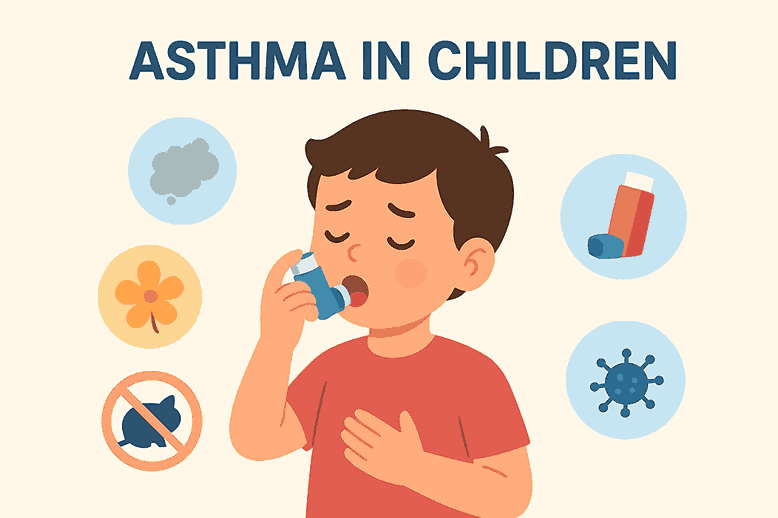
Asthma is one of the most common chronic conditions in children worldwide. It affects not only the lungs but also a child’s quality of life. Parents often feel anxious when their child has frequent coughing, wheezing, or difficulty breathing. However, with proper knowledge and timely treatment, asthma can be managed effectively, allowing children to lead active and healthy lives.
What Is Asthma in Children?
Asthma is a chronic condition where the airways of the lungs become inflamed and narrow. This makes breathing difficult, especially during attacks. In children, asthma can present as frequent coughing, shortness of breath, chest tightness, or wheezing.
Unlike a simple cough or cold, asthma is recurring and can flare up when exposed to specific triggers. Recognizing these patterns early helps parents seek timely medical support.
Causes of Asthma in Children
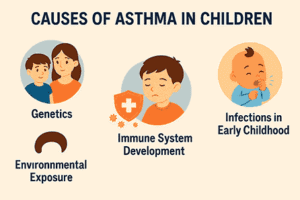
The exact cause of asthma is still not fully understood. However, research shows it results from a mix of genetic, environmental, and lifestyle factors.
Genetics
Children with a family history of asthma, eczema, or allergies are more likely to develop asthma.Immune System Development
Some children’s immune systems may react more strongly to environmental allergens. This heightened sensitivity can lead to asthma symptoms.Environmental Exposure
Polluted air, second-hand smoke, and strong chemical fumes can irritate a child’s lungs, increasing the risk of asthma.Infections in Early Childhood
Respiratory infections during infancy may contribute to long-term airway sensitivity.
Common Triggers of Asthma
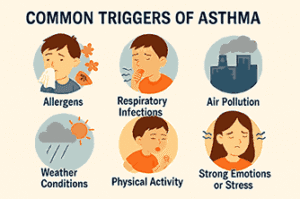
Asthma does not remain constant; it flares up with exposure to certain triggers. Parents must identify and reduce these triggers at home, school, and outdoor environments.
Allergens
Dust mites, pollen, mold, and pet dander are major culprits. Even carpets and stuffed toys can harbor allergens.Respiratory Infections
A simple cold or flu can worsen asthma symptoms.Air Pollution
Smoke from vehicles, factories, or even burning wood can irritate the lungs.Weather Conditions
Cold air, sudden weather changes, or high humidity often trigger attacks.Physical Activity
While exercise is important for children, it may cause exercise-induced asthma if precautions are not taken.Strong Emotions or Stress
Surprisingly, crying, laughing, or emotional stress can sometimes lead to breathing difficulty in asthmatic children.
Symptoms Parents Should Watch For
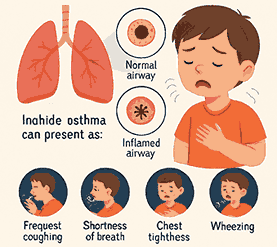
Asthma symptoms may vary from mild to severe. Recognizing them early ensures timely treatment.
Persistent cough, especially at night or early morning
Wheezing or whistling sound during breathing
Shortness of breath
Chest tightness or pressure
Fatigue during play or sports
If a child has frequent breathing difficulties, it is important to seek medical advice immediately.
Diagnosis of Asthma in Children
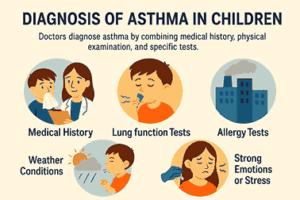
Doctors diagnose asthma by combining medical history, physical examination, and specific tests.
Medical History: Family history of asthma or allergies is important.
Lung Function Tests: For older children, spirometry measures how well air flows in and out of the lungs.
Allergy Tests: Identifying specific allergens helps with prevention.
For very young children, diagnosis may rely more on observation and response to treatment since lung function tests are harder to perform.
Treatment of Asthma in Children
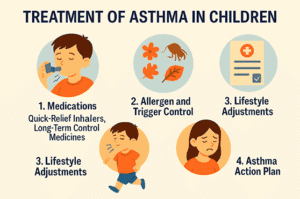
Asthma has no permanent cure, but it can be controlled with proper treatment. The goal is to keep symptoms minimal and prevent severe attacks.
1. Medications
Quick-Relief Inhalers: These rescue inhalers act fast to ease breathing during an attack.
Long-Term Control Medicines: These reduce inflammation and prevent frequent symptoms. They must be taken regularly, even when the child feels well.
2. Allergen and Trigger Control
Use dust-proof covers for pillows and mattresses.
Keep the home smoke-free.
Clean and ventilate the house regularly.
Limit exposure to pets if allergies exist.
3. Lifestyle Adjustments
Encourage regular but moderate exercise.
Maintain a healthy diet rich in fruits, vegetables, and omega-3 fatty acids.
Teach the child relaxation techniques to manage stress.
4. Asthma Action Plan
Doctors often provide a written plan outlining how to manage symptoms, which medicines to use, and when to seek emergency help. Parents, teachers, and caregivers should be aware of this plan.
Emergency Signs – When to Seek Immediate Help
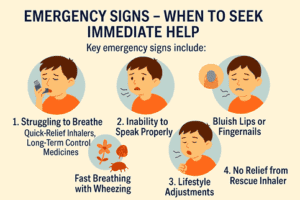
Asthma can sometimes escalate quickly, and knowing when to act is vital. Parents, teachers, and caregivers should be able to recognize the red flags of a severe asthma attack.
Key emergency signs include:
Struggling to Breathe: The child is gasping or using extra chest and neck muscles to breathe.
Inability to Speak Properly: If the child cannot complete a sentence without stopping for breath, it is a warning sign.
Bluish Lips or Fingernails: This indicates a lack of oxygen and requires urgent medical attention.
Fast Breathing with Wheezing: If wheezing becomes louder, or if breathing becomes rapid and shallow, it is dangerous.
No Relief from Rescue Inhaler: If symptoms persist even after using a quick-relief inhaler, immediate hospital care is necessary.
In such situations, do not wait to see if the child improves. Take them to the nearest emergency department or call for medical assistance. Quick action can save lives.
Prevention – The Best Approach to Asthma Care
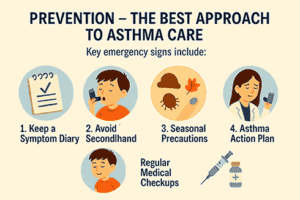
Although asthma cannot be completely cured, preventing attacks is possible with consistent care. Parents should adopt preventive strategies that reduce the chances of flare-ups.
Keep a Symptom Diary
Track the child’s symptoms, triggers, and medicine use. This helps doctors adjust treatment plans effectively.Avoid Secondhand Smoke
Smoke is one of the most harmful asthma triggers. A smoke-free home and car environment are essential.Seasonal Precautions
During pollen season or cold weather, limit outdoor activities or ensure the child wears a mask.Regular Medical Checkups
Even when symptoms seem under control, regular follow-ups with a pediatrician or pulmonologist ensure proper monitoring.Vaccinations
Flu shots and other recommended vaccines reduce the risk of respiratory infections that worsen asthma.
Supporting Children Emotionally
Asthma is not just a physical illness; it also impacts a child emotionally. Children may feel left out during sports or fear sudden attacks. Parents can support them by:
Encouraging open conversations about their feelings.
Teaching them relaxation and breathing exercises.
Helping them understand that asthma does not define their abilities.
Building confidence is just as important as managing symptoms. Children who feel supported emotionally often cope better with asthma challenges.
The Role of Schools and Teachers
Managing asthma requires teamwork, and schools play an essential role. Teachers and school nurses should be aware of each child’s condition and their asthma action plan. They should also be prepared to respond if a child shows emergency signs during class or sports.
Parents should communicate openly with the school and ensure their child has access to inhalers when needed. A supportive school environment can prevent asthma from interfering with education and social life.
Future Outlook – Advances in Asthma Care
Medical research is continuously improving asthma management. Newer inhalers, biologic therapies, and digital tools such as smart inhalers and asthma monitoring apps are helping families manage symptoms more effectively.
In the future, personalized medicine may allow doctors to tailor asthma treatment based on a child’s genetics and lifestyle. This could mean fewer side effects, better control, and improved quality of life.
Conclusion
Asthma in children is a lifelong condition, but it does not have to control their lives. By recognizing symptoms, avoiding triggers, and following a structured treatment plan, parents can help their children stay active and healthy. Emergency signs should never be ignored, and early intervention is key to preventing severe attacks.
With love, support, and medical guidance, children with asthma can thrive, chase their dreams, and breathe with confidence.
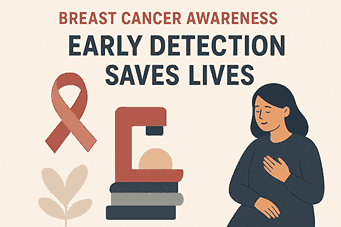
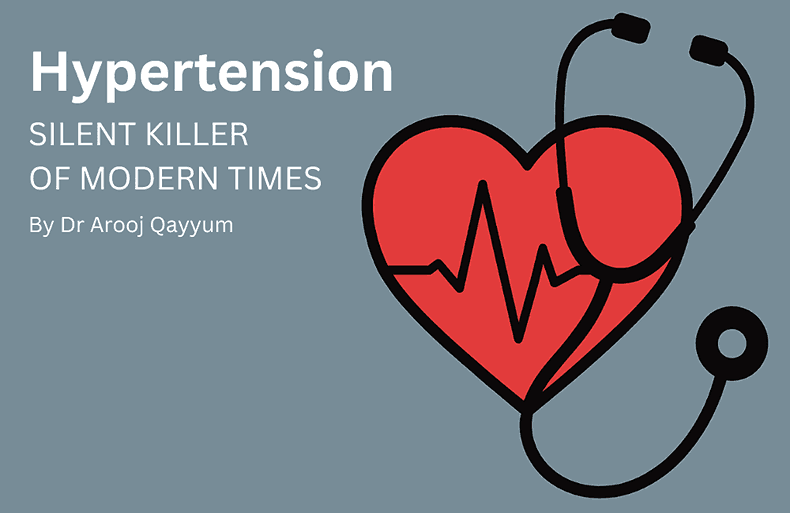
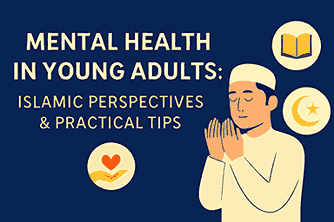
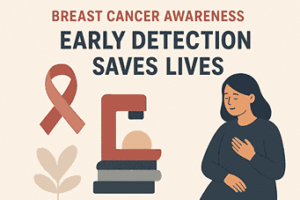
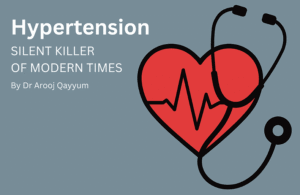
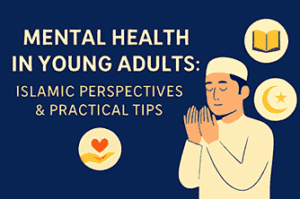
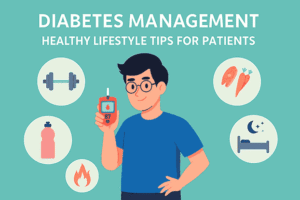
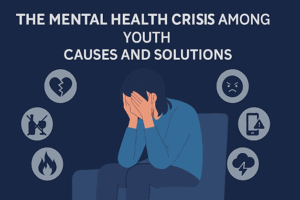
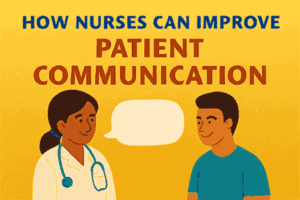
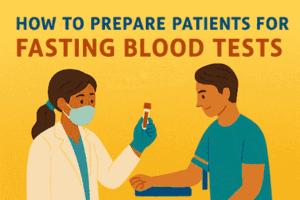
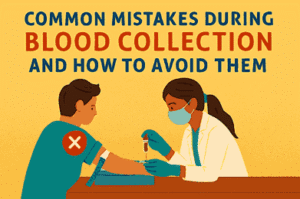
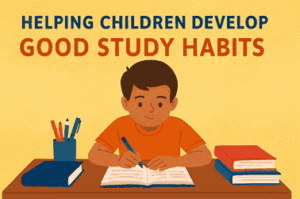
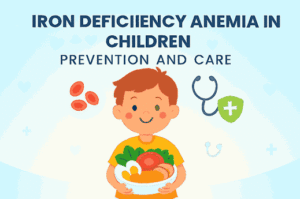
Post Comment